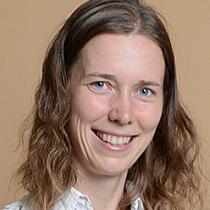CLR person interests, research and publications
Researcher

About me
My specialization is numerical modeling of tectonic processes. I focus on deformation, heat transport and magmatism in the crust in a collisional setting. My models are compared with data acquired in the ancient and modern orogens. My aim is to clarify how observed features, such as structures and pressure–temperature conditions, were formed. In this respect I benefit from a tight collaboration with geologists.
Currently, my main interest is the fate of the subducted continental crust and formation of collisional orogens. The geological data from the Bohemian Massif show that in this region, continental crust was first deeply subducted and then exhumed through the upper-plate lithospheric mantle. This style of evolution may explain the origin of ultra-high-pressure rocks also in other orogens, but it is definitely not the only possibility – different evolution is characteristic for the Caledonian cratonic collision, and yet different for the Central Asian Orogenic Belt. Understanding these differences in a single numerical model framework is a great challenge.
Recently, I have also been dealing with models that include melting and melt migration. With these models, I aim to understand the interplay between melting, internal deformation and thermal evolution of crust in thick and warm collisional belts.
Research interests
- Dynamics of continental subduction and collision
- Partial melting and migration of melt through the continental crust
- Grain size evolution and grain-size sensitive creep in crustal material
Research projects
Melt migration is the key process transferring mass, heat and volatiles from the Earth’s depth towards the surface, and therefore shaping the chemical and thermal structure of the lithosphere. Common understanding of crustal melt migration is biased towards mechanisms that can be easily identified as they preserve macroscopic segregations of melt in outcrops, such as in dykes or leucosome-bearing migmatites. In contrast, recent observations show that micro-scale pervasive flow of melt along grain boundaries can affect significant portions of hot continental crust.
The granulite-gneiss extrusions in the Bohemian Massif are interpreted as parts of the lower plate, subducted, relaminated below the upper plate and exhumed as kilometre-scale translithospheric diapirs through upper plate. Because dominated by metagranites, it is repeatedly stated that they originated from continent subduction. Many studies were dedicated to their tectono-metamorphic Variscan evolution. Almost missing are studies trying to understand their paleo-environment that allowed such unprecedented travel of rocks through mantle.
We need to determine what is the structure of magmatic systems that underlay volcanoes in order to understand how volcanic eruptions are fed from depth and how mineral resources associated to igneous rocks are generated. The current paradigm is that transient pockets of crystal-poor magma form in extended columns of crystal-rich magma mush.
Selected segments of Euroasian orogenic system are used to constrain relative contribution of contrasting processes of continental construction in collisional and accretionary orogenic systems. Principal objectives of the proposal are: (i) identification of the individual terranes, kinematic analysis of their movements and characterization of deformation style connected with their amalgamation; (ii) estimation of net crustal growth vs. recycling of preexistent crustal material.
We aim to study and compare various aspects that are related to exhumation of deeply buried felsic rocks that form now Devonian and Carboniferous granulite-migmatite domes in the Variscan belt and contributed thus to large-scale crustal differentiation. The role of melting on the rheological weakening of the rocks is known for a long time, but differences of the melting processes of metasedimentary rocks and granitoid rocks, with respect to fluid-present, dehydration and fluid-fluxed melting and relation to the P-T path of the rocks are rarely studied simultaneously.
